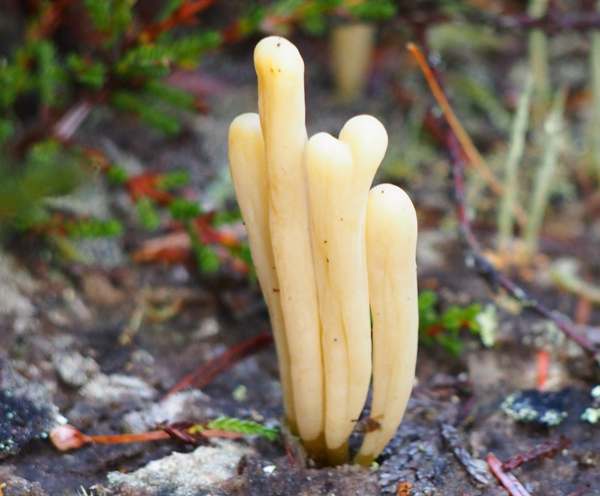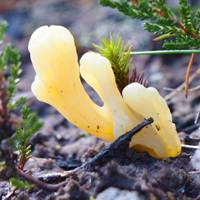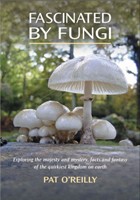Clavaria argillacea Pers. - Moor Club
Phylum: Basidiomycota - Class: Agaricomycetes - Order: Agarcales - Family: Clavariaceae
Distribution - Taxonomic History - Etymology - Identification - Reference Sources

Initially looking very much like pallid specimens of Golden Spindles Clavulinopsis fusiformis, with which they could easily be confused, the fruitbodies of Moor Club soon become clavate.
Distribution
Widespread in Britain and Ireland but not very common, the Moor Club occurs in many countries on mainland Europe including Denmark, Germany, Holland, France and Czechoslovakia. This species has also been reported from North America and from Australia, although concern has been expressed that the latter might be a case of misidentification.
The pictures shown on this page were taken in Scotland.
Taxonomic history
Moor Club (in the past also referred to as Field Club) was first described scientifically in 1797 by Christiaan Hendrik Persoon, who gave this club fungus what remains its generally-accepted scientific name Clavaria argillaceae. The name was retained by Elias Fries in his Systema mycologicum (1821–1832).
Synonyms of Clavaria argillacea include Geoglossum argillaceum (Pers.) Fr.
Etymology
Clavaria, the genus name, means club-like, while the specific epithet argillacea is derived from the Latin noun argilla, meaning white clay.
Identification Guide
 |
Dull pale yellow, initially with sharpish tips that become more rounded and swollen to form a clavate fruitbody with a darker short sterile stem that is usually visible at the base; occasionally branching but most often not. Either solitary or with a few spaced fruitbodies; occasionally in small tufts The very variable fruitbodies are usually 2 to 8cm tall (very occasionally to 15cm tall) and 24 to 10mm across their major diameter. |
SporesElongated ellipsoidal to cylindrical, smooth, 9-13 x 4.5-5.5µm. Spore printWhite. |
|
Odour/taste |
Not distinctive. |
Habitat & Ecological role |
In acidic soil usually with mosses and always near to ericaceous plants, notably Common Heather Calluna vulgaris, with which it probably forms some kind of mutual relationship, possibly mycorrhizal. |
Season |
September to November in Britain and Ireland. |
Occurrence |
Uncommon in Britain and Ireland. |
Similar species |
Clavulinopsis fusiformis has unbranched pointed spindles, usually in dense tufts. Its spores are broadly ellipsoidal. Clavulinopsis laeticolor is rarely tufted and either spindle-shaped or narrowly clavate. Its spores are almost spherical. |
Reference Sources
Fascinated by Fungi, 2nd Edition, Pat O'Reilly 2016, reprinted by Coch-y-bonddu Books in 2022.
Dictionary of the Fungi; Paul M. Kirk, Paul F. Cannon, David W. Minter and J. A. Stalpers; CABI, 2008
Henrici, A. (2003). Notes and records. Field Mycology. 4(2): 65-67 (BMS).
BMS List of English Names for Fungi
Taxonomic history and synonym information on these pages is drawn from many sources but in particular from the British Mycological Society's GB Checklist of Fungi.
Acknowledgements
This page includes pictures kindly contributed by Alan Inman.
Fascinated by Fungi. Back by popular demand, Pat O'Reilly's best-selling 450-page hardback book is available now. The latest second edition was republished with a sparkling new cover design in September 2022 by Coch-y-Bonddu Books. Full details and copies are available from the publisher's online bookshop...

